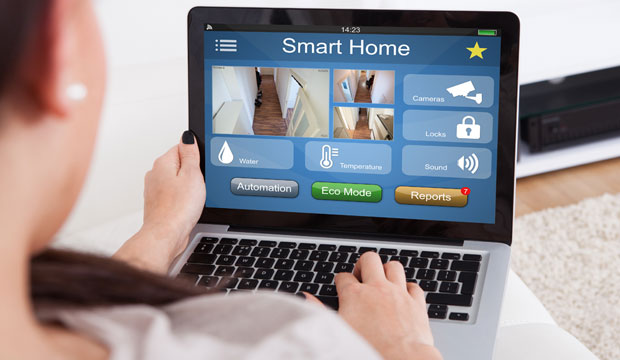One of the loudest buzzes in the Internet of Things is around smart homes. Vendors have rushed to connect everything imaginable within a house, including lights, appliances, entertainment systems, windows, shades, door locks, ceiling fans, faucets, smoke detectors, security systems, furniture — basically anything with a battery or power cord now can be connected, and if it doesn’t have a power solution, one is in the works.
With a swipe of your finger on your tablet or smartphone, you can control anything around you. You can program it to do whatever you want, whenever you want. But just how smart do you want your home to be?
When a Smart Home Loses Connections
With wireless connectivity, you can retrofit any home to become a smart home, but the ultimate way to do it is to start with the construction of a new home, which I just happen to be doing. I’m in the process of building a home that will be both a smart home and a sustainable one that can operate completely off-grid. Both functions require a significant investment in different technologies.
The challenge of building a smart home is balancing several factors, including reliability, privacy and security, upgradability, and cost. With building a new home, I am especially concerned about reliability. I want everything to work properly even if I lose Internet connectivity or power.
The last time I counted the potential nodes for sensors, lights, appliances, etc., the number was several hundred. I do not want to worry about replacing the batteries for all those solutions, but there are certain things — like door locks — that I want to continue working if I lose power.
Likewise, if I lose my Internet connection, which does happen when you are on a satellite or cellular connection, I want the devices in my house to be able to communicate with each other.
The Internet connectivity is also a factor for privacy and security. While I may wish to access certain functions remotely — like my security system, thermostats or lights — I would prefer that some functions connect within the house, both to reduce the potential for loss of information and to reduce my data consumption, which also is limited on satellite and some cellular plans. Do I have to build a home firewall? I hope not.
When Smart Home Tech Ages
I’m also concerned about upgradability and interoperability. There is currently a mishmash of ever-changing wireless standards being used in smart home solutions. Piecing together a solution through a single hub is challenging enough. The last thing I want is a solution that is not supported in five years and requires a major upgrade.
Likewise, if there is a key firmware or security update, I want to ensure that it upgrades the selected devices without causing havoc with the rest of the network. With many cutting-edge solutions coming from startups, what if the company goes out of business? Even established companies might discontinue a product and stop upgrading it.
This is especially critical for security — you want the security devices in your home to be ahead of any flaw or emerging threat. I also want to leverage the new slate of artificial intelligence and machine learning solutions that will be introduced over the next few years.
Finally, there is cost. Wireless light switches have been available for more than 30 years, but they are seldom used because a manual switch can be purchased for under a dollar and rarely fails. Smart solutions are much more expensive than their manual or dumb counterparts. Then you must add in the opportunity cost of having to maintain them and the network.
Balancing Act
Theoretically, I could build the ultimate smart house that is controlled by speaking to Amazon Alexa or Google Home. However, the industry still has a long way to go to develop solutions that ensure reliability, security, upgradability and cost-effectiveness.
In addition, it is too early to determine the impact AI/ML will have, other than that it is changing everything in the tech industry.
My home is likely going to be a delicate balance of the manual/dumb world and a smart home, with the hope that the investment I make today will pay off in the future. Luckily, most smart home devices have been designed to retrofit existing dumb homes.
Stay tuned for additional posts in my experience on building a smart sustainable home in the future.























































